The Business of Platforms Summary
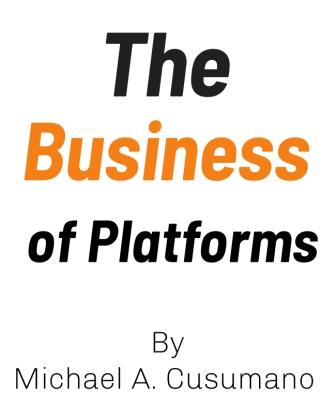
If you control the playground, everyone else pays to play. Platforms don’t just make money—they set the rules. If you're building a business, aim to be the platform, not just another player.
The Business of Platforms Summary
Ever wondered how companies like Amazon, Airbnb, or Uber became unstoppable? It’s not just luck—it’s platform power.
If you’re building a business or trying to stay relevant in today’s fast-changing economy, The Business of Platforms is the playbook you didn’t know you needed.
This The Business of Platforms summary gives you the highlights—but trust me, the full book is packed with deep insights, real-world case studies, and practical strategies you can’t afford to miss.
Want to compete with the best? Don’t just read the summary—grab the full book and stay ahead of the game
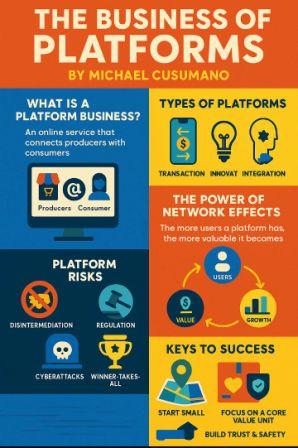
Why We Recommend this Book
It explains the hidden mechanics behind the most powerful companies in today’s economy—like Amazon, Google, Apple, Uber, and Airbnb.
It gives readers a clear roadmap for launching, managing, or competing with platforms, using real-world data, case studies, and actionable advice.
Business Executives & Strategy Teams at companies like Microsoft, Walmart, and traditional banks have used the ideas to adapt to a platform world.
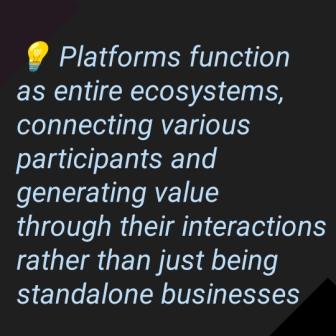
Questions to Ask Yourself before Reading The Business of Platforms
- Am I trying to build, work for, or compete with a platform business?
- Do I understand the difference between a traditional (pipeline) business and a platform?
- What real-world platforms do I admire or want to study (e.g., Amazon, Airbnb, YouTube)?
- What challenges am I facing (or interested in) when it comes to user growth, monetization, or competition?
- How do I feel about platform power—do I see it as opportunity, threat, or both?
- What industry or niche am I in, and how is it being disrupted by platforms?
The Business of Platforms
Introduction
Platforms are running the world. Whether it’s Amazon connecting buyers and sellers, Airbnb matching travellers with hosts, or Apple creating an entire ecosystem around apps and devices—platforms are the modern business model behind today’s biggest winners.
In The Business of Platforms, Michael Cusumano, Annabelle Gawer, and David Yoffie pull back the curtain on how these companies work, compete, and dominate.
This book is filled with real examples, surprising data, and clear strategies that show you what it really takes to launch, grow, or partner with a platform.
Whether you’re a founder, investor, product manager, or just curious about how the digital economy works, this book gives you the tools to think like a platform leader—not just a player.
The Business of Platforms summary gives you the key takeaways, but the full book is where the real power lies—from deep dives into strategy to case studies of what works (and what fails).
If you want to build something that scales and survives the future, this book isn’t optional. It’s essential.

Click on the Tabs Below to Read The Business of Platforms Summary
The Business of Platforms reveals how today’s most powerful companies succeed by creating platforms that connect users, scale rapidly, and dominate markets—while warning that smart strategy, trust, and timing are key to avoiding failure.
Who Should Read The Business Platforms?
1. Entrepreneurs and Startup Founders
2. Product Managers and Business Strategists
3. Corporate Executives at Traditional Companies
4. Investors and Venture Capitalists
5. Policy Makers and Regulators
Anyone who wants to build, work for, compete with, invest in, or regulate the next Google, Amazon, or TikTok should read this book. It’s not just theory—it’s a roadmap for thriving in the age of digital platforms.
Chapter 1: Platform Thinking – Introduction
You know how companies like Uber, Amazon, and Airbnb don’t really own much of what they sell?
Like, Uber doesn’t own cars. Airbnb doesn’t own hotels. And yet, they’re making billions? That’s because they’re not traditional businesses. They’re platforms.
This chapter is saying “Let’s slow down and explain how the world has changed.”
How Did We Get Here?
Back in the day, companies made stuff and sold it. You build a car, sell it. Done.
But then the internet came, and companies started realizing:
“Wait… what if we just connected people who have things with people who need things?”
Think about eBay in the early 2000s. They didn’t sell products—they just let people sell to each other. That was revolutionary.
And then Google realized it could connect people with information. Facebook connects people with each other.
Amazon, in the beginning, was more traditional (they sold books). But now they’re a full-on platform, connecting buyers and third-party sellers.
So What Is a Platform, Really?
According to the book, a platform is a business that creates value by facilitating interactions between two or more interdependent groups—usually producers and consumers.
Amazon connects sellers with buyers.
YouTube connects content creators with viewers.
Apple’s App Store connects developers with users.
Uber connects drivers with riders.
They don’t just sell things—they build the space where others can sell, create, or connect.
Two Main Types of Platforms:
Transaction Platforms:
These help people exchange goods, services, or information.
Think: Uber, Airbnb, Etsy, eBay.
They make money by taking a cut of every transaction.
Innovation Platforms:
These are technological foundations where others can build new products or services.
Think: iOS, Android, Windows, AWS (Amazon Web Services).
Developers build on them, and the platform provider sets the rules.
Some companies (like Apple) are hybrids—they do both. Apple gives you the iPhone (innovation platform), but it also runs the App Store (transaction platform).
So Why Are Platforms So Powerful?
Platforms grow super fast because of something called network effects.
Here’s a simple example:
Imagine if only 10 people were on Facebook. Boring, right?
But when your friends join, and their friends join, suddenly it’s addictive.
The more people who join, the more valuable the platform becomes.
The authors back this up with data. They studied 43 publicly listed platform companies and found that they were more profitable, grew faster, and were valued more highly by investors than traditional businesses.
In fact, 7 of the 10 most valuable companies in the world today are platforms. Think about it:
- Apple
- Microsoft
- Amazon
- Google (Alphabet)
- Meta (Facebook)
- Alibaba
- Tencent
All platforms. Not factories. Not farms. Not stores.
What Makes This a Big Deal?
This is not just a new trend—it’s a massive shift in how business works. If you want to build a company today, you have to understand platform thinking.
It’s not enough to just make a great product—you need to think about ecosystems, connections, and creating value between people.
Real-Life Thought Experiment:
Let’s say your cousin is a great cook. She wants to open a restaurant.
Traditional business: Rent a space, buy equipment, hire staff, cook meals, sell them.
Platform thinking: What if instead she started an app where home chefs like her can sell meals to neighbours?
Now she’s not just a cook—she’s a platform builder. That could scale fast. She’s not limited by how much she can cook. She’s helping others cook and sell too.
Quick Takeaway:
Platforms connect people and create value through interaction, not just production. This chapter sets the stage for understanding this new world—and shows why it’s the future of business.
Chapter 2: Winner Take All or Most – More Than Network Effects
This chapter answers a big question:
“Why do some platforms win everything while others crash and burn?”
It’s not just luck—it’s strategy, timing, and how the market works.
This chapter dives into how platform markets often lead to “winner take all” or “winner take most” outcomes. But here’s the twist: it’s not just about network effects—there’s more going on behind the scenes.
Network Effects: The Classic Example
Network effects mean the more people who use a platform, the more valuable it becomes for everyone.
Think of the telephone in the early days:
If only one person had a phone, it was useless.
But when 100 people had phones? Now you could call anyone—boom, value!
The more users, the more connections, the more reasons to join.
Same with Facebook: nobody wants to join a social network if their friends aren’t on it. But once they are? You’re hooked.
That’s a classic positive feedback loop, and platforms with strong network effects grow fast and often crush the competition.
But Wait—There’s More Than Just Network Effects
Here’s where the authors get smart.
They say network effects aren’t the only reason some platforms win.
There are other forces at play and they include:
1. Multi-Homing:
Are Users Loyal or Jumping Around?
Multi-homing means using more than one platform.
Let’s say you’re a driver. You might drive for Uber and Bolt at the same time. That’s multi-homing.
If it’s easy and cheap to multi-home, platforms have a hard time locking you in. But if it’s expensive or inconvenient (like switching smartphones from iPhone to Android), people tend to stick with one. That gives the platform more power.
Example:
Most riders multi-home (they use Uber and Lyft depending on price).
But developers for iOS often don’t bother with Android—they stick to one ecosystem because it takes time and money to support both.
So platforms try to reduce multi-homing by:
- Offering rewards
- Locking in users with perks
- Making switching annoying
2. Differentiation and Niches
Some platforms survive even when giants dominate—because they focus on specific needs or niches.
Example:
Etsy vs. Amazon.
Amazon is huge, but Etsy focuses on handmade and vintage goods. That’s a niche Amazon doesn’t do as well. So Etsy survives—even thrives.
The authors point out: not every market tips toward one winner. There’s room for smart players who focus on unique experiences or communities.
3. Barriers to Entry
Platforms that build strong early advantages can make it tough for new players to compete.
Example:
Google Search is so dominant, it’s almost impossible for a new search engine to get traction.
They’ve got data, users, money, and brand trust.
Also, some platforms build tech or regulatory barriers—like Airbnb learning how to deal with city rules before competitors do.
Digital Tech Supercharges Everything
The internet and smartphones made platforms easy to scale, cheaper to launch, and fast to go global. That’s why you hear about companies going from zero to unicorn in 2 years.
But digital tech also creates fast-moving battlegrounds, where one mistake can cause you to lose the whole market (more on this in Chapter 4).
So What Should Entrepreneurs Do?
The authors offer key takeaways:
- Understand your market’s tipping point.
Will it go to one winner, or is there room for multiple players? - Watch for multi-homing.
If users can easily switch, find ways to make them loyal. - Carve out a niche.
You don’t have to be the biggest—you just have to be the best at something specific. - Invest early in barriers.
Whether it’s trust, data, community, or tech—build something hard to copy.
Quick Takeaway:
Platforms often end in “winner takes most” situations, but only if you play your cards right. It’s not just about attracting users—it’s about keeping them, differentiating, and being smart about the ecosystem you’re building.
Chapter 3: Strategy and Business Models – Innovation, Transaction, or Hybrid
This chapter walks you through how to actually build a platform business.
So, imagine you had an idea to launch “Uber for tutors” or “Airbnb for photographers”—this chapter gives you the exact four-step game plan to bring it to life (and avoid flopping).
First, what kind of platform are you building?
There are three main types of platforms:
Innovation, Transaction and Hybrid Platforms as mentioned in the previous chapter.
Here are the 4-step process to build a successful platform:
Step 1: Choose the Market Sides
Ask: Who are you connecting?
A platform always involves at least two groups:
Airbnb connects travelers and hosts.
Uber connects drivers and riders.
LinkedIn connects job seekers and recruiters.
Some platforms even have three or more sides—like a smart home platform that connects users, device makers, and app developers.
The key? Each side has to benefit from being on your platform, or they won’t stay.
Step 2: Solve the “Chicken-and-Egg” Problem
Here’s the big issue with any new platform:
- No buyers will come unless there are sellers.
- No sellers will come unless there are buyers.
So how do you get both sides on board?
Examples:
PayPal paid eBay sellers cash to start using it—and gave referral bonuses to users.
Amazon secretly filled their marketplace with their own fake buyers/sellers to simulate activity in the early days.
YouTube made it dead simple to upload and share videos, so content creators came first, then the viewers followed.
Solutions include:
- Subside one side (give perks/freebies).
- Partner with existing players.
- Pre-load supply (like Uber hiring drivers before launching to the public).
Step 3: Design Your Business Model
This is where you decide:
Who pays? How much? When?
You might:
- Charge one side and offer the other side free access.
- Take a cut from every transaction (like Airbnb or Uber).
- Offer premium tools for creators (like Etsy does for sellers).
- Charge for visibility (like Amazon charging for sponsored listings).
A big warning from the authors:
Don’t price it wrong!
Pricing too high or charging the wrong side can kill your growth. (They go deeper into this in Chapter 4.)
Step 4: Set the Rules of the Ecosystem
Once people start using your platform, you need rules to:
- Build trust
- Prevent abuse
- Keep the quality high
Examples:
Airbnb enforces safety rules, user reviews, and has a host guarantee.
Apple’s App Store has strict app guidelines (and bans sketchy apps fast).
Uber has driver and rider ratings—and bans people for bad behavior.
This isn’t just about safety—it’s about creating a healthy environment that keeps everyone coming back.
What if You’re Building a Hybrid?
A lot of today’s biggest platforms are hybrids—they mix innovation and transactions.
Example: Amazon
Innovation side: People build tools, APIs, and apps on Amazon Web Services (AWS).
Transaction side: Buyers and sellers meet on the marketplace.
But hybrids are harder to manage—you’re juggling multiple ecosystems with different needs and incentives.
Takeaways for Founders and Managers:
- Choose your sides wisely.
Don’t try to serve everyone—focus on core participants who drive value. - Think hard about launch strategy.
You can’t just “open your doors”—you need a plan to get both sides in. - Design pricing carefully.
Make sure your model encourages participation and doesn’t kill network effects. - Set clear rules early.
Trust is everything. If one side feels exploited, they’ll leave.
Quick Takeaway:
If you’re starting a platform, this chapter is your blueprint. But even if you already run a business, it gets you thinking:
- Can I turn my product into a platform?
- Could I let others build on top of what I’ve made?
- What would happen if I connected more users to each other?
And remember—a platform isn’t a product, it’s a stage where others create, trade, and interact.
Chapter 4:Common Mistakes – Mispricing, Mistrust, Mistiming… and Hubris
This chapter is like the “what not to do” handbook. It’s packed with real stories of how big-name platforms messed up, sometimes badly, and what we can learn from them.
Let’s assume you’ve got your platform idea. You’ve figured out who it connects, solved the chicken-and-egg thing, and even set up a fair business model. But here’s where so many platforms crash and burn—they get overconfident, careless, or just plain greedy.
This chapter highlights four major mistakes that kill platforms—no matter how cool the tech is.
1. Mispricing:
Charging the Wrong Side or the Wrong Amount
Platforms are tricky because there’s always at least two sides, and the question is:
Who should pay? And how much?
Failure Example: Microsoft Zune
Remember Zune? Microsoft’s version of the iPod.
They launched a music platform but charged too much for songs and made the user experience clunky.
Meanwhile, Apple’s iTunes made buying music easy and priced it well. Boom—Apple wins, Zune dies.
Why it matters:
If you charge creators too much (like app developers or sellers), they’ll go to competitors.
If you charge users too early, they may never come at all.
Takeaway: Be super strategic with pricing. Think long-term—growth now can mean profits later.
2. Mistrust: Losing User Confidence
Platforms rely on trust. If people feel unsafe, cheated, or exploited—they’ll leave.
Example: Uber’s Early Scandals
- Drivers complained of unfair treatment
- Riders felt uneasy with lack of accountability.
The result? Uber got hit with lawsuits, bad press, and driver strikes.
Uber survived, but many smaller platforms haven’t.
Another case: eBay
eBay was once the go-to platform for online shopping—but fake listings and scams eroded trust. That opened the door for Amazon to step in with its guaranteed delivery and strong buyer protections.
3. Hubris:
Thinking You’re Too Big to Fail
This is a big one.
Some platforms get successful, and then they stop listening, ignore competitors, or abuse their power.
Example: MySpace
MySpace dominated early social media but got cocky:
- Poor innovation
- Cluttered design
- Ignored Facebook
Meanwhile, Facebook focused on clean design, real names, and university networks. The rest is history.
Another example: Nokia
They had the market, but they dismissed the iPhone.
“We don’t need apps. We don’t need touchscreens.”
Boom. Apple eats their lunch.
Lesson: Platforms can fall fast when they get arrogant and ignore market shifts.
4. Mistiming: Acting Too Late—or Too Soon
Timing is everything.
Example: Webvan
An online grocery delivery platform way before its time (late ’90s).
They burned through $1 billion and collapsed. Why?
Infrastructure wasn’t ready.
People weren’t used to shopping online yet.
Now look—Instacart, Amazon Fresh, Jumia are thriving because the world finally caught up.
Another side of mistiming: Waiting too long
Kodak invented digital photography—but buried it, afraid it would kill their film business.
Spoiler: digital killed their film business anyway.
So what should managers and entrepreneurs do?
Key Takeaways:
- Design your pricing carefully.
Often, one side needs to be subsidized (maybe forever). Make it worthwhile to stay. - Build and protect trust.
Enforce community guidelines. Punish bad actors. Make users feel safe. - Stay humble.
Even if you’re ahead, keep innovating and listening. Disruption can come fast. - Time your launch wisely.
Don’t go too early (when the market isn’t ready) or too late (when competitors have taken over).
Let’s say you were launching “TaskTrade”—a platform to trade small tasks and errands in your city.
You’d want to:
- Subsidize one side at first (maybe pay people to post tasks).
- Build trust with verified profiles, reviews, and insurance.
- Avoid cocky moves, like ignoring new competitors or cutting user benefits too fast.
- Launch when people are looking for side hustles and gig work, not during economic calm when everyone’s already busy and fine.
This chapter is like your platform’s early warning system. It helps you avoid landmines before you step on them.
Chapter 5: Old Dogs and New Tricks – Build, Buy, or Belong to a Platform
Should we build our own platform, buy an existing one, or just join someone else’s?
This is like when your favorite store realizes e-commerce is blowing up and thinks:
“Do we create our own Amazon? Or just sell on Amazon?”
This chapter looks at how older or traditional companies deal with the rise of platform businesses.
Some try to create platforms from scratch (build).
Some go out and acquire existing ones (buy).
Others just join platforms already doing well (belong).
The authors explain that each choice has risks and rewards.
Option 1: Belong to Someone Else’s Platform
Sometimes, it’s easier and faster to just join a successful platform instead of creating one.
Example: Nike on Amazon (then leaving)
Nike once partnered with Amazon to sell directly. It gave them access to Amazon’s massive audience—but they eventually left because:
- They lost control of branding.
- Knockoffs and third-party sellers diluted their image.
So yeah, joining a platform can be good for exposure—but you lose some control.
Other examples:
Small businesses selling on Etsy, Jumia, or Konga.
Game developers listing on Apple’s App Store.
Pros: Fast access to users.
Cons: You follow their rules, and they take a cut.
Option 2: Buy a Platform (Or the Tech/Talent)
If you’ve got deep pockets, you can buy a promising platform instead of building one.
Example: Walmart buying Jet.com
Walmart bought Jet.com to compete with Amazon. Jet had:
- A solid e-commerce system
- Younger, tech-savvy customers
- A good logistics setup
Walmart gained a ready-made team and tech—but eventually shut Jet.com down and integrated its features into Walmart.com.
Other examples:
Facebook buying Instagram and WhatsApp.
Google buying YouTube.
Lesson: Buying can be faster than building—but it’s expensive and not always smooth.
Option 3: Build Your Own Platform
Some companies decide to go for it—they try to build a platform from scratch.
Example: Apple and the App Store
Apple created the iPhone—and then launched the App Store to let developers build on it.
Today, that platform generates billions for Apple, with developers all over the world relying on it.
Another example: Disney+
Instead of sticking with Netflix or Hulu, Disney built its own streaming platform. They already owned top content (Marvel, Pixar, Star Wars), so the move made sense.
But it wasn’t cheap—it took years of planning and huge investment.
Building works best when:
- You have unique assets (like Disney’s content).
- You have a large user base or loyal customers (like Apple or Google).
- You’re ready for a long-term, high-cost effort.
What Should a Company Do?
It depends on:
- Your strengths (Do you have a loyal customer base? Can you attract developers or content creators?)
- How fast the market is moving (If it’s already mature, building might be too late.)
- Your resources (Buying and building need deep pockets.)
Golden Rule from the Book:
“Don’t build a platform unless you really have something new or valuable to offer.”
Key Takeaways for Managers and Entrepreneurs
- Joining someone else’s platform is a good way to test the waters—especially for smaller players.
- Buying a platform is risky but offers speed—great if you can spot a rising star early.
Building your own platform takes time, money, and vision—but offers the most control and upside if you get it right.
Avoid building a “me-too” platform unless you have something really unique.
Let’s say you run a local grocery chain. You’ve noticed everyone’s shopping online.
You could:
Belong: List your store on Jumia Food.
Buy: Acquire a small delivery startup with great software and team.
Build: Launch your own delivery app with features like subscription boxes, loyalty rewards, etc.
Each move has trade-offs. Belonging is quick but limits your power. Buying is bold but risky. Building gives you full control—if you’re ready for the grind.
Chapter 6: Double-Edged Swords – Harness Platform Power, but Don’t Abuse It
This one’s a little different—it’s not just about growth or strategy. It’s about ethics, power, and responsibility.
The authors are basically saying: Sure, platforms can dominate—but they better not become bullies.
Big Idea:
Platforms are super powerful—but that power can be dangerous if not handled well.
Let’s imagine platforms like tech giants (Google, Facebook, Amazon) are playing with lightsabers:
Used wisely = awesome.
Used selfishly = somebody gets hurt (users, workers, competitors… or even the platform itself when regulators come knocking).
Recently:
1. The Mood Has Changed
At first, the world was in love with platforms:
- “Wow! I can get a ride in 3 minutes with Uber!”
- “I can watch anything I want on YouTube!”
- “I can rent a stranger’s house for my holiday!”
But now? There’s skepticism. People are asking:
- “Why is Amazon crushing small sellers?”
- “Why is Facebook selling my data?”
- “Why is Uber underpaying drivers?”
The tone has shifted. The public, press, and regulators are watching more closely.
2. Don’t Be a Bully:
Antitrust and Regulation
Platforms can easily tilt the playing field in their favour.
Example: Google
Google runs search and advertises on search. That’s like being both the referee and a player in the match. Regulators in the U.S. and EU have sued Google for:
- Prioritizing its own products in search results
- Making it hard for competitors to gain visibility
Lesson:
If you run the platform and use it to squash others—you’re setting yourself up for lawsuits, fines, or even breakups.
3. Openness vs. Trust:
Managing Privacy, Fraud, and Fairness
Platforms love openness—it drives growth. But too much openness leads to bad behaviour.
Example: Facebook and Fake News
Facebook was praised for connecting people. But it became a playground for misinformation, election interference, and privacy breaches.
Example: Airbnb
Great idea—but it also opened doors to:
- Fake listings
- Discrimination by hosts
- Neighbourhood pushback
The challenge:
- Be open enough to grow
- Be strict enough to keep users safe and society happy
4. The Workforce: Contractors vs. Employees
Many platforms rely on gig workers—Uber drivers, delivery riders, taskers.
But here’s the ethical question:
- Are they really independent contractors—or are they just employees in disguise?
Contractors = no benefits, no insurance, no job security
Employees = full protections but higher cost to platforms
Example: Uber
They say drivers are free to work when they want…
But the system nudges them with bonuses, penalties, and algorithms—so are they really free?
Governments are stepping in, demanding fair treatment.
5. Self-Regulate Before You Get Regulated
If you wait for governments to act, it’s often too late and too painful.
Example: Apple’s App Store Controversy
Apple takes up to 30% of every app sale. That’s huge.
Epic Games (makers of Fortnite) fought back, claiming it was unfair. Lawsuits followed.
Now Apple is under pressure to loosen control. If they’d self-regulated earlier, maybe they’d have avoided the mess.
Key Takeaways for Managers and Entrepreneurs
- Power is a double-edged sword—use it wisely.
- Platforms must balance growth with responsibility—especially with data, pricing, and user safety.
- Don’t wait for governments to come after you—anticipate the backlash and act early.
- Treat gig workers fairly—or public opinion (and the law) will turn against you.
- Trust matters—abuse it, and your users (and partners) will leave.
So picture this: Your friend builds a platform for connecting tutors and students. It grows fast. Great!
But then:
She starts charging tutors high fees.
Ignores students’ complaints about sketchy tutors.
Mines user data without consent.
Suddenly—boom!
Tutors leave for a more ethical platform.
Parents complain online.
A government agency asks for a “chat.”
That’s the heart of this chapter. Platforms can become huge—but they can also collapse if they forget their responsibilities.
Chapter 7: Looking Forward — Platforms and the Future
This chapter looks at where platforms are heading, how the game is evolving, and what to expect in the years to come.
Big Idea:
We’ve seen how platforms changed industries—but this isn’t the end. It’s just the beginning. New frontiers like AI, blockchain, healthcare, and education are the next battlegrounds.
1. Platforms Are Still Eating the World.
Platforms have already transformed these industries:
- Retail (Amazon, Shopify)
- Transportation (Uber, Lyft)
- Media (YouTube, Netflix, TikTok)
- Hospitality (Airbnb, Booking.com)
But they’re not done. The authors believe we’ll soon see platforms dominate in healthcare, finance, education, legal services, and even government services.
2. AI and Data Are the New Fuel
Think of AI as a platform that makes other platforms smarter:
- Netflix recommends what you’ll love next.
- Google predicts your next search.
- Amazon knows what you want before you click.
The more data a platform gathers, the smarter it becomes—and the harder it is for newcomers to compete.
Warning for New Entrants:
It’s no longer enough to just “connect users.” The platforms of the future need to learn fast using AI.
3. New Battlegrounds Emerging
The chapter identifies three new battlegrounds:
A. Voice and Virtual Assistants
Think Alexa, Google Assistant, and Siri. These voice platforms could become the new interface between users and all other platforms.
Imagine:
- Ordering food
- Scheduling rides
- Getting medical advice
All through voice. Whoever owns the voice platform may control all others underneath.
B. AR/VR and the Metaverse
Companies like Meta (Facebook), Apple, and Google are betting on augmented and virtual reality. These will need new platform models—think virtual marketplaces, avatars, events, services.
But who wins? The platform that:
- Makes it easy to build AR/VR apps
- Connects users safely
- Helps creators make money
C. Blockchain and Decentralized Platforms
This one’s a twist. Unlike Uber or Airbnb, blockchain-based platforms aim to cut out the middleman entirely.
Imagine:
- A rideshare app where drivers and riders connect without Uber
- A marketplace where creators keep 100% of their revenue
- A social media platform with no central owner
Blockchain could enable truly open platforms, governed by communities, not companies. But adoption is still early.
4. The Future Isn’t Just Tech—it’s Trust, Too
People are more skeptical now. In the future, the winning platforms won’t just be tech-savvy—they’ll be:
- Transparent (about how they use your data)
- Fair (to both sides of the platform)
- Safe (from fraud and abuse)
- Ethical (especially in AI decision-making)
So yes, AI is powerful—but it needs rules and guardrails.
5. What Entrepreneurs Should Focus On
If you’re building the next big platform, remember:
- Speed matters—you need to scale fast to win.
- Trust matters more—users, creators, and partners need to feel safe.
- Own a unique asset—whether it’s data, network effects, or a niche audience.
- Expect regulation—especially if you’re successful. Think ahead.
- Embrace partnerships—don’t always go solo. Sometimes platforms can grow faster together.
Final Thoughts from the Authors
Platforms aren’t going away—they’re evolving.
There will be winners, losers, and survivors.
But one thing is clear: You must either build a platform, belong to one, or get out of the way.
Platforms like Uber and Airbnb changed the game. But the next wave? It’s coming fast—AI-powered services, blockchain apps, virtual reality, and even voice-based platforms. If you want to build something big, don’t just connect people. Think smarter, safer, and more ethical. And oh—get ready for regulators. The Wild West days are over.
Here are things you need to start doing right now to implement the strategies in this book:
1. Adopt Platform Thinking in Your Business Idea
What to Do:
Start thinking about how your product/service could become a platform by connecting two or more user groups (e.g., buyers & sellers, hosts & guests).
How to Implement (Step-by-step):
Step 1: Identify your current or future business idea.
Step 2: Ask: “Can I serve two sides of a market?”
E.g., Can I connect experts with learners? Drivers with riders?
Step 3: Sketch out who these two groups are and what each side gains.
Step 4: Create a simple 1-page platform canvas outlining:
- Users (supply side and demand side)
- Value exchanged
- Core interaction
- Revenue sources
Timeframe:
1–2 days of ideation and sketching
Challenges:
Confusion about who the two sides are
Solution: Focus on matching value creators with value seekers.
Overcomplicating it:
Solution: Start with one niche use case (e.g., dog sitters and pet owners).
Metrics:
- Complete your platform canvas
- Identify at least 2 potential user groups
- Share the idea with 3 people and get feedback
2. Solve the Chicken-or-Egg Problem for Your Platform
What to Do:
Every platform struggles with attracting both sides. Start by choosing one side to “seed” first.
How to Implement (Step-by-step):
Step 1: Identify which user side is easier to attract early (usually the supply side).
Step 2: Offer strong incentives (free usage, exposure, referrals, etc.) to onboard them.
Step 3: Manually match the first few interactions (Airbnb did this!).
Step 4: Create a feedback loop—ask both sides what’s working.
Timeframe:
1–2 weeks for seeding and first interactions
Challenges:
Low initial engagement:
Solution: Offer high value or even cash incentives to early users.
Lack of trust:
Solution: Create strong onboarding content and safety assurances.
Metrics:
- Number of early users on the seeded side (e.g., 50 sellers or experts)
- Number of first transactions/connections made
- Feedback received from both sides
3. Design a Simple, Scalable Platform Business Model
What to Do:
Structure how your platform will create, deliver, and capture value.
How to Implement (Step-by-step):
Step 1: Choose how you’ll earn: transaction fees, subscriptions, ads, etc.
Step 2: Define what you’ll offer for free vs. paid.
Step 3: Use platforms like Gumroad, Paystack, or Stripe to test a revenue stream.
Step 4: Create terms and policies (basic platform rules) that protect users.
Timeframe:
2–4 weeks for MVP monetization model and testing
Challenges:
1. Fear of charging early
Solution: Offer freemium or “early access” discounts.
2. Unclear value proposition:
Solution: Use surveys and interviews to refine your offer.
Metrics:
- Revenue from early users (even if small)
- % conversion from free to paid
- User churn or satisfaction after first use
4. Build Trust Into Your Platform from Day One
What to Do:
Trust is critical for platforms—especially transaction platforms like Uber, Upwork, etc.
How to Implement (Step-by-step):
Step 1: Add ratings/reviews systems.
Step 2: Use escrow or payment hold services to protect buyers/sellers.
Step 3: Publish clear rules: what happens in disputes, how you handle fraud.
Step 4: Collect ID or KYC from users if needed for sensitive platforms.
Timeframe:
3–6 weeks to design and implement basic trust systems
Challenges:
1. Users not reviewing or rating
Solution: Offer incentives for first reviews or feedback.
2. Handling complaints:
Solution: Start with simple, fair rules and be transparent.
Metrics:
- % of users who complete ratings/reviews
- Number of trust complaints reported and resolved
- Average user rating of platform experience
5. Avoid Platform Killer Mistakes (Mispricing, Mistiming, Mistrust)
What to Do:
The authors found that platforms often fail due to missteps—usually from poor pricing or not building enough trust early.
How to Implement (Step-by-step):
Step 1: Review your pricing—is it fair to both sides?
Step 2: Check if you’re launching too early/late—do you have early traction?
Step 3: Survey users regularly to gauge trust and usability.
Step 4: Have a plan to pivot if signs of “tipping” (user growth, virality) don’t appear.
Timeframe:
Ongoing, with monthly reviews
Challenges:
1. Being too emotionally attached to your pricing or idea
Solution: Treat feedback like data, not criticism.
2. Underestimating timing issues:
Solution: Study competitor growth curves and user behaviour patterns.
Metrics:
- User retention rate after 30 days
- Net Promoter Score (NPS)
- Revenue vs. cost-per-acquisition ratio
6. Decide Whether to Build, Buy, or Join a Platform
What to Do:
Not every entrepreneur needs to build a platform from scratch. You can also buy an existing platform or join one and build a business on top (e.g., sell on Shopify, offer services on Upwork).
How to Implement (Step-by-step):
Step 1: Research 3–5 existing platforms in your space.
Step 2: Analyze: is there room to stand out or build something better?
Step 3: Consider partnerships, acquisitions, or platform integrations.
Step 4: If building from scratch, map your competitive advantage.
Timeframe:
1–3 months for research and decision-making
Challenges:
1. Fear of losing control by joining an existing platform
Solution: Focus on building loyal customer base inside the platform.
2. Cost of acquisition or building tech:
Solution: Start with low-code platforms or partner with developers.
Metrics:
- Revenue generated from joined platform
- Customer acquisition cost vs. lifetime value
- Speed to market (time from idea to first transaction)
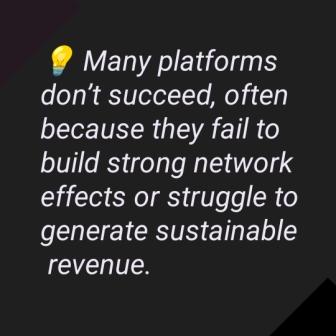
Michael A. Cusumano
Michael A. Cusumano is the Sloan Management Review Distinguished Professor at the Massachusetts Institute of Technology’s Sloan School of Management, with a joint appointment in the MIT Engineering Systems Division.
He specializes in strategy, product development, and entrepreneurship in the computer software industry, as well as automobiles and consumer electronics.
Annabelle Gawer
Annabelle Gawer is Chaired Professor in Digital Economy and Director of the Centre of Digital Economy at the University of Surrey.
She is the co-author of Platform Leadership (with Michael Cusumano) and editor of Platforms, Markets and Innovation, as well as numerous articles in top international journals.
Her seminal research on platforms explains how firms’ strategy, innovation, and competition interact to shape platform ecosystems in the digital economy.
David B. Yoffie
David B. Yoffie is the Max and Doris Starr Professor of International Business Administration at Harvard Business School.
He served on the board of directors of numerous companies, including 29 years on Intel’s board and more than 25 years on the board of the National Bureau of Economic Research.
His writings on business strategy and technology have been widely published.
Book Details
Title: The Business of Platforms: Strategy in the Age of Digital Competition, Innovation, and Power
Authors: Michael A. Cusumano, Annabelle Gawer, David B. Yoffie
Publisher: Harper Business (an imprint of HarperCollins Publishers)
Publication Date: May 7, 2019
Format: Hardcover, eBook, Audiobook
Pages: 320
Genres: Business & Economics / Strategic Planning, E-Commerce, Management Science
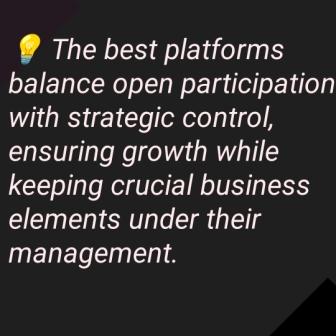
The Business of Platforms Quiz
-
Start The Business of Platforms Quiz


